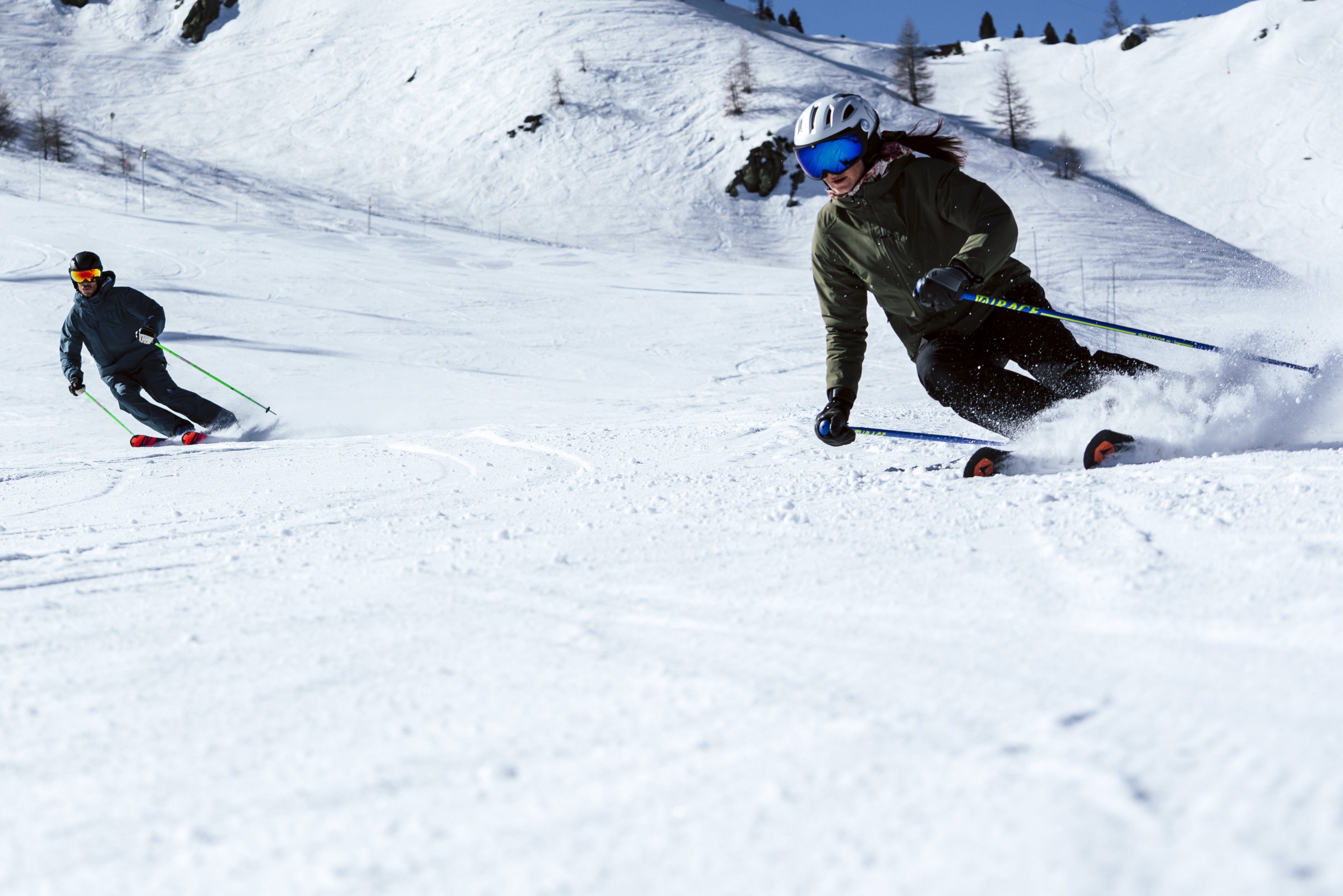MASCHERE DA SCI: QUALI CONSIGLI PER EVITARE L'APPANNAMENTO?
21 marzo / 4 minuti di lettura
È ora di andare a sciare! Pronti a sfrecciare sulle piste, notate però che la vostra maschera da sci si appanna. Un problema riscontrato da tutti gli sciatori; alcuni semplici suggerimenti da implementare rendono molto facile eliminare l'appannamento e persino prevenirne la formazione. Scoprite i nostri migliori consigli per eliminare l'appannamento dal vostro schermo o dalle vostre lenti.

PERCHÉ SI FORMA L'APPANNAMENTO SULLE MIE LENTI E SUI MIEI GOGGLES?
Un fenomeno fisico completamente normale, l'appannamento è la conseguenza della trasformazione dell'umidità presente nell'aria in acqua. Quando l'aria calda prodotta dal vostro viso colpisce la superficie fredda della vostra maschera o goggle, questo incontro condensa l'umidità dal suo stato gassoso a quello liquido. Si formano quindi minuscole goccioline d'acqua che si attaccano al vetro del vostro schermo, ostruendo la visione. In generale, questa reazione avviene quando c'è una significativa differenza tra la temperatura dell'aria esterna e quella intrappolata tra la vostra pelle e le vostre lenti. Ecco perché si verifica spesso sulle piste.
+ ABITUDINI DA EVITARE
Alcune cattive abitudini possono causare l'appannamento dei vostri occhiali da sole o del vostro schermo.
Se togliete e rimettete regolarmente i la vostra maschera da sci, ad esempio, aumentate notevolmente il rischio di condensa. Allo stesso modo, se tendete a tirare la vostra maschera sulla fronte quando non state sciando, considerate che questa parte del viso è una delle zone che produce più calore e umidità. Infatti, quando mettete la maschera sulla fronte e sudate, i contorni di schiuma protettiva si inzuppano di sudore. Rimetterla sugli occhi in seguito farà sì che il flusso d'aria attiri l'umidità all'interno e provochi l'appannamento. Siate consapevoli che una maschera da sci troppo stretta favorirà anche la condensa, coprendo la superficie del vostro schermo con fastidiose goccioline.
> Potrebbe interessarti anche: Come scegliere la tua Maschera da Sci?
I CONSIGLI PIÙ EFFICACI CONTRO L'APPANNAMENTO
Come evitare che i vostri goggles o la vostra maschera da sci si appannino? Le 5 migliori pratiche da adottare.
+ MANTENERE CALDI I GOGGLES E LE MASCHERE DA SCI
Al fine di prevenire una differenza troppo grande tra caldo e freddo quando mettete la vostra maschera da sci sui vostri occhi, evitate di conservare questo tipo di attrezzatura in luoghi dove la temperatura è generalmente bassa, come una soffitta, una cantina o il bagagliaio di un'auto. Al contrario, tenete i vostri goggles o la vostra maschera insieme al resto dei vostri vestiti da sci in una stanza riscaldata.
+ NON PULIRE MAI L'INTERNO DELLE LENTI
Mentre state sciando, l'appannamento si forma improvvisamente sul vostro schermo e la vostra visione si offusca. In questo caso, il riflesso è spesso quello di voler togliere gli occhiali o la maschera per pulire le lenti. Tuttavia, è meglio evitare di cedere a questa tentazione, perché questa piccola pulizia fatta in fretta rischia di danneggiare il trattamento anti-appannamento (o Anti-Fog) applicato all'interno del vostro schermo. Invece, lasciate che l'appannamento scompaia da solo asciugando all'aria la vostra maschera da sci per alcuni secondi, e poi rimettetela.
+ INDOSSARE CORRETTAMENTE PASSAMONTAGNA E SCALDACOLLO
Per proteggersi dal freddo, molti sciatori si attrezzano con uno scaldacollo o un passamontagna. Un'ottima idea per mantenere caldo il viso ma che può causare l'appannamento. Infatti, se non vengono indossati correttamente, cioè senza essere a contatto con la schiuma della vostra maschera o sotto i vostri occhiali, lo scaldacollo, come il passamontagna, avrà lo svantaggio di dirigere l'aria calda che espirate verso i vostri occhi.

+ LASCIARE CHE L'ARIA CIRCOLI CORRETTAMENTE
Se preferite indossare una maschera da sci piuttosto che occhiali, evitate di ostruire la ventilazione di quest'ultima con un cappello, ad esempio, o lasciando che la neve si accumuli su di essa. Se l'aria non circola correttamente, non verrà evacuata come dovrebbe e ciò creerà sicuramente appannamento sul vostro schermo.
+ DARE LA PRIORITÀ ALL'ATTREZZATURA DI QUALITÀ
Al fine di beneficiare del massimo comfort, preferite modelli di fascia alta. Le maschere da sci e i goggles offerti da rinomati produttori sono pensati e progettati per offrire prestazioni ottimali e accompagnarvi così tutto il giorno sulle piste.
Specialmente equipaggiate con il rivestimento "Anti-Fog Platinum" sui modelli di lenti fotocromatiche Phantom e Phantom+, le maschere da sci e i goggles da montagna Bollé offrono anche una chiarezza ottica eccezionale della visione, qualunque siano le condizioni meteorologiche.
> Potrebbe interessarti anche: Quali sono i vantaggi di una Maschera da Sci Fotocromatica?